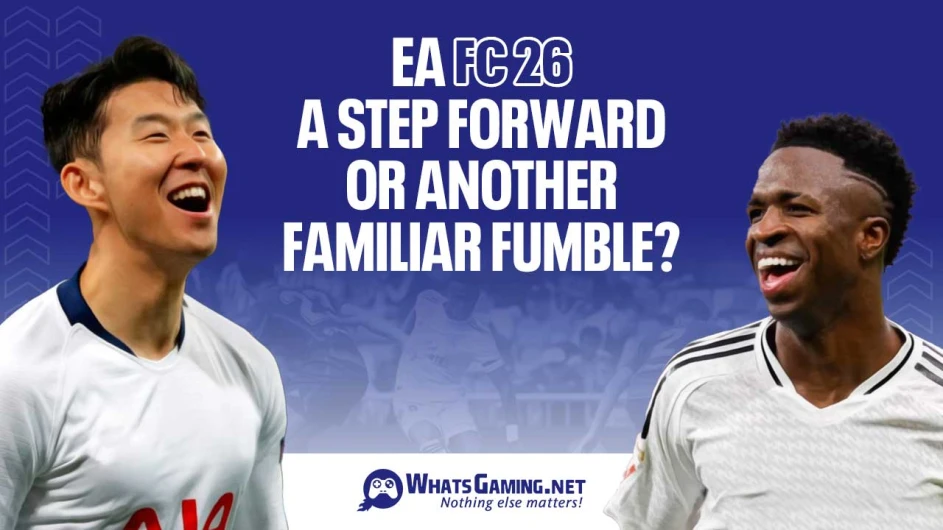
EA FC 26 – A Step Forward or Another Familiar Fumble?
EA has officially revealed FC 26, and for the first time in recent memory, the unveiling trailer offered more than pre-order bait. It showed actual gameplay, highlighted new mechanics, and even teased a more responsive footballing experience. Whether this is a legitimate improvement or just another carefully curated highlight reel designed to drum up hype remains to be seen. But beneath the flashy animations and marketing buzzwords, there are some genuine signs of change and skepticism is just as warranted as excitement.
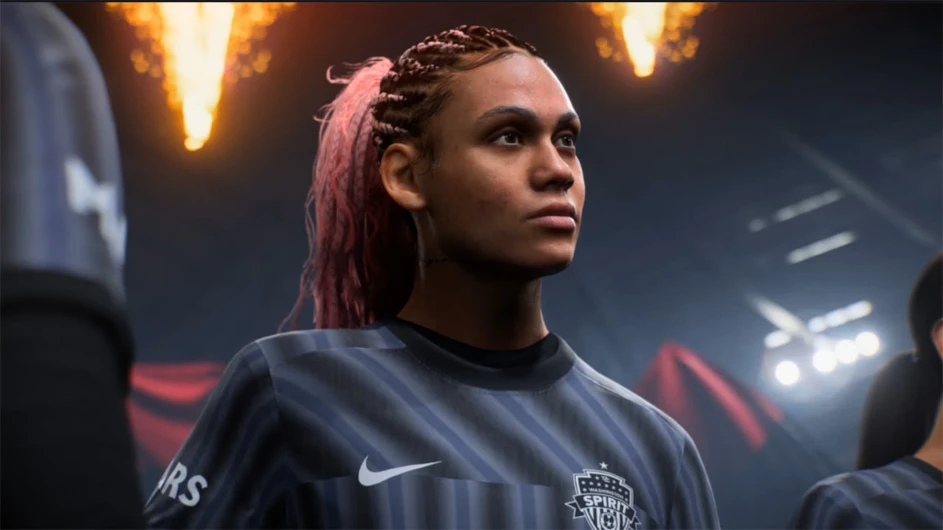
A Trailer That Suggests Progress
The FC 26 reveal stood out because it didn’t just rely on stylized cinematics. This time, actual gameplay clips were presented. The footage included possession-based tackling and sequences where defenders appeared to realistically knock attackers off the ball. It was a refreshing change to see players fall naturally after strong tackles rather than bouncing off them like pinballs a long-standing gripe in the community.
Yet, this raises the question: is this real gameplay or just another visual trickery typical of EA’s reveal trailers? Time and again, football fans have seen stunning tackle animations in trailers, only to find themselves back in a game plagued by unrealistic, physics-defying contact during actual play.
A New Mode Split: Authentic vs. Competitive
One of the most notable additions is a gameplay mode selector that allows players to choose between Authentic and Competitive experiences. If implemented correctly, this could be a game-changer. The idea is simple: career mode fans who prefer slower, more realistic football can stick with the authentic setting, while Ultimate Team and online players can enjoy a more responsive, arcade-like version.
This division of gameplay modes is a smart concept. It acknowledges the diverse preferences across the community. However, the practicality of maintaining two separate gameplay ecosystems is questionable. If EA has historically struggled to balance one version of the game, it’s hard to imagine them executing two without sacrificing quality or consistency in at least one area.
Movement and Dribbling Overhaul
According to EA, agility and dribbling have been refined to feel more responsive in all directions. The promise is tighter controls, smoother transitions, and more natural-feeling direction changes. Players like Neymar and Musiala were shown gliding past defenders with fluid footwork and balance, hinting at a shift toward realism in movement mechanics.
This sounds promising, particularly after years of complaints about sluggish dribbling mechanics and unresponsive player turning. However, players are all too familiar with buzzwords like “explosiveness” and “fluidity” that fail to translate into real improvements once the game launches.
The fatigue system is another area receiving attention. EA claims players will maintain more pace while fatigued, which could help reduce the infuriating drop-off in performance during late-game scenarios. Still, there are concerns. If not properly tuned, this change might result in unrealistic outcomes like tired attackers outrunning fresh defenders deep into matches.
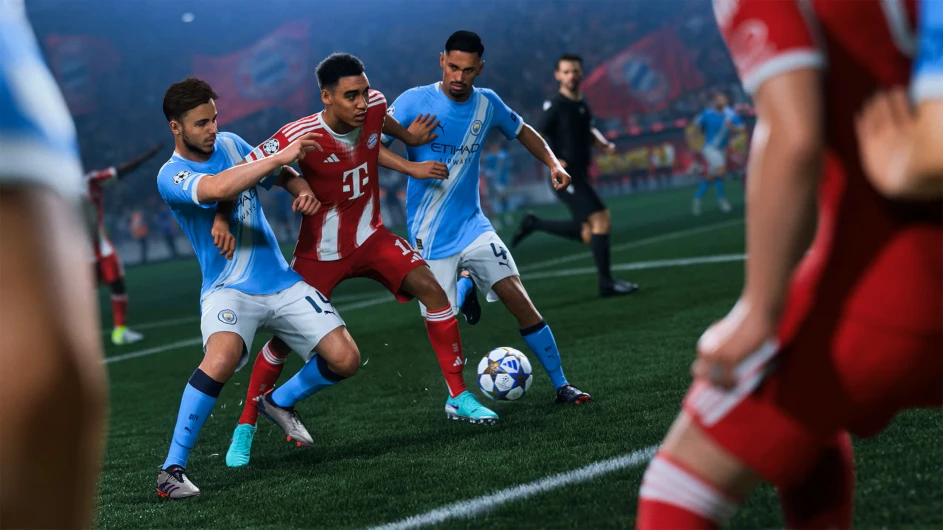
Graphics and Animation Upgrades
Among the more subtle but helpful additions are new visual indicators for skill moves and weak foot ability. This minor UI update allows players to identify their footballers’ capabilities at a glance, potentially saving them from humiliating in-game blunders. It’s a small but welcome tweak that reflects genuine quality-of-life improvements.
However, not everything shown was consistent. A comparison scene meant to highlight animation improvements used different player models and stats across the two clips, undermining the legitimacy of the feature it aimed to showcase. If the goal is to demonstrate technical growth, misleading comparisons only fuel player distrust.
Controlled Deflections and Goalkeeping Logic
EA introduced the term “controlled deflections,” promising fewer frustrating rebound goals and more intelligent ball behavior after saves and blocks. In theory, this would reduce the frequency of scenarios where a goalkeeper deflects the ball straight back into the path of a striker.
But clarity is lacking. Is this improvement the result of smarter goalkeeper AI, improved ball physics, or merely a tweak in animation timing? Without detailed explanations or in-game evidence, players are left to guess what “fewer deflection goals” really entails.
Revamped Passing and Shooting Mechanics
The new passing system looks vibrant and purposeful. Footage from the trailer showed quick, incisive passes reminiscent of peak-era Barcelona. While visually impressive, there’s a caveat this style of play appears to be linked to a new playstyle system. If certain pass types are restricted behind chemistry ratings or perks, it risks undermining the experience for players without meta setups.
Shooting mechanics also appeared more refined, but as with everything else in the trailer, the question remains whether these changes are fundamental or purely aesthetic. Until the game is released and subjected to real-world gameplay, all passing and shooting upgrades are theoretical.
Features: Tournament Mode, Manager Market, Player Roles
Several new and returning features were introduced. The tournament mode in Ultimate Team is back a classic four-round knockout format with rewards and incentives. This is a much-needed revival, providing an alternative to the relentless grind of regular online competition.
Another surprise is the introduction of a manager market in Ultimate Team. Players will now be able to sign managers similarly to how they sign footballers. While it adds an extra layer of customization, it’s unclear whether this innovation adds true strategic depth or is merely a cosmetic addition.
Player roles have also been reintroduced, though their impact remains questionable. Assigning a captain to a right-back may sound meaningful, but without significant influence on gameplay behavior such as positioning or leadership effects, it’s largely symbolic.
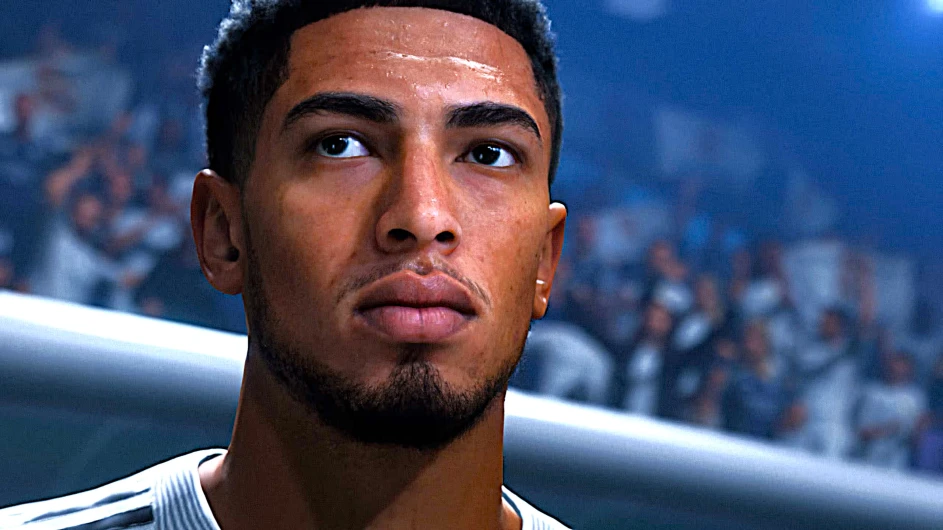
Responsiveness: A Longstanding Issue
Perhaps the most contentious part of EA’s announcement is the claim that gameplay responsiveness issues are primarily the player’s fault. EA cited internal tests suggesting that latency and input delays stem from user setups rather than server limitations or game engine flaws.
This assertion has understandably sparked backlash. Many players invest in high-performance setups, including wired Ethernet, high-refresh monitors, and optimized connections, only to be told they’re at fault for delays. This perceived deflection of responsibility is a sore point among the community.
EA also claims to have added hundreds of new animations to help responsiveness a move that feels counterintuitive. Reducing animation clutter might serve the purpose better than adding more. A streamlined experience is often preferable to one overloaded with unnecessary flourishes.
Despite these concerns, EA did note that one frame of input delay has been shaved off in certain cases. While that’s a marginal improvement, for high-level players, even a single frame can impact outcomes. However, proof of this advancement must be demonstrated in-game, not just in trailers.
Champions Format and Hacker Problem
The game’s Champions mode remains a point of contention. Instead of addressing the ongoing problem of hackers and cheaters, the solution presented is to increase the number of matches in the Champions schedule. This is widely seen as missing the point.
Adding more games without fixing matchmaking and security issues simply increases player fatigue. More time spent in a broken or unfair environment isn’t a solution it’s an escalation of frustration. Quality should always trump quantity, and until core integrity issues are resolved, expanding game modes may backfire.
Draft Mode: Still Neglected
Foot Draft remains one of the most stagnant features in the game. Despite its potential, EA has not meaningfully updated it in years. The rewards remain largely the same, uninspired and uncompetitive compared to other modes.
Players continue to ask for basic improvements like rotating reward packs or tweaking entry criteria to make the mode more appealing. These are minor changes that require minimal development effort but could significantly enhance the user experience. Unfortunately, they continue to be ignored.
Challenger Mode and Career Scenarios
A notable addition for casual players is Challenger Mode, designed for divisions six and below. This format offers a mini competitive environment for those not engaged in top-tier play. It's a sensible step that allows more players to enjoy competition without facing elite squads.
Live career scenarios have also been teased. These include real-time managerial changes and story-driven elements that can alter gameplay. While this feature sounds exciting, its success depends entirely on execution. Dynamic storylines like a high-profile manager joining a rival club mid-season could breathe life into a traditionally static mode but only if implemented convincingly.
Online career mode, a longstanding request, is still absent. This remains a disappointing omission, given the potential for innovation and shared experiences.
Updates to Clubs Mode
The Clubs feature also sees improvements. Players can now affiliate with up to three different clubs, eliminating the need to abandon friends or face social pressure when switching squads. This freedom enhances flexibility and reflects the real-world social dynamics of team sports.
Goalkeeping mechanics in clubs have also been adjusted. While details are scarce, the promise of less erratic and more consistent goalkeeping behavior is encouraging.
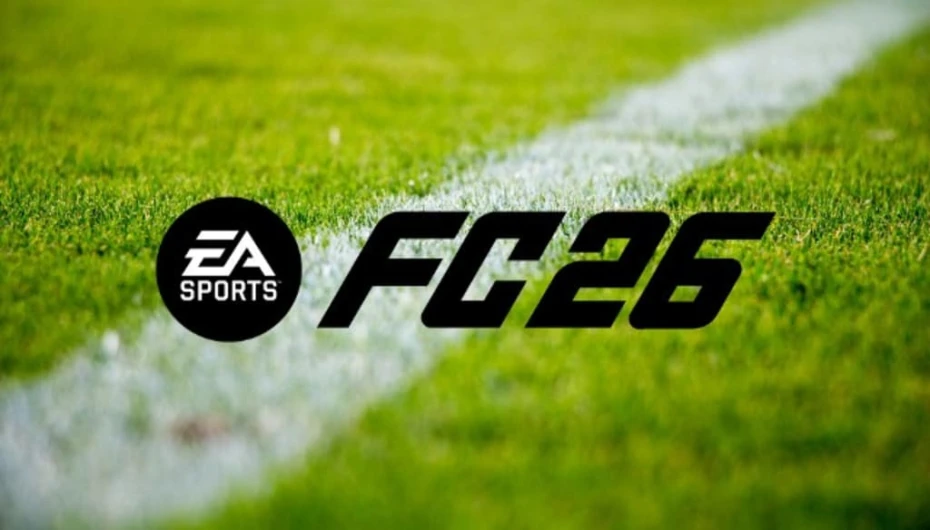
Pre-Order Content and Final Thoughts
Early purchase incentives include bonus points, player evolutions, and an untradeable icon from a select pool. While these perks may entice some, caution is advised. Past releases have shown that flashy pre-order rewards rarely compensate for a flawed gameplay experience.
Ultimately, FC 26 presents a cautiously optimistic picture. There are meaningful improvements in concept split gameplay modes, fluid dribbling, tournament revival, and better visual cues. But history reminds players to be wary. Trailers often promise change while the final product falls back on old habits.
The football gaming community deserves a polished, responsive, and immersive experience. This year may be EA’s best shot at redemption. The community is watching closely. Faith must be earned through gameplay, not marketing.
We will share more updates on FC 26 in separate articles. If you found this information helpful or would like to learn more, please be sure to explore the other articles on our site.
EA SPORTS FC 26 Fixes Lag: Gameplay Responsiveness Gets Massive Upgrade



